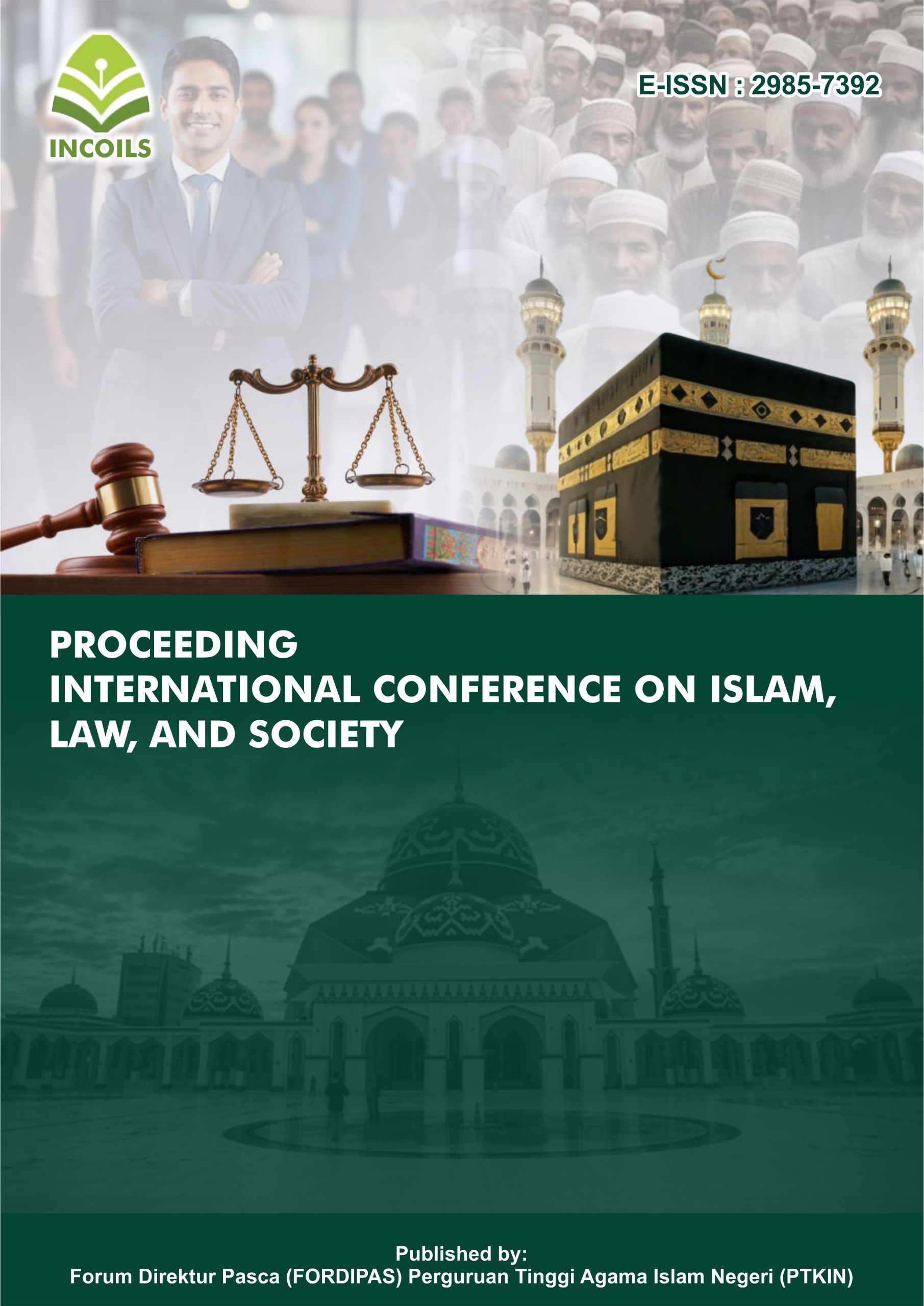Need Assessment of Augmented Reality-Based Science Learning Media on Solar System Material
DOI:
https://doi.org/10.70062/incoils.v3i1.122Keywords:
Need Assesment, Learning Media, Augmented RealityAbstract
Science learning must be able to explain the abstractness of the concepts and theories in it. Science learning design includes, models, methods and the right media are certainly very influential on the success of science learning in the classroom. Learning media has an important role to convey abstract material content to be easily understood by students. This study aims to analyze the needs of teachers for Augmented Reality-based science learning media on Solar System material. The subjects of this study were madrasah ibtidaiyah class teachers in Brebes district. The research model used is descriptive quantitative with questionnaire data collection methods through google form. Data analysis techniques used quantitative descriptive methods using percentages. The results of this study are that 75% of teachers have difficulty in instilling the concept of Solar System material in students; 70% of teachers have not utilized the available learning media; and 100% of teachers are interested in computer and smartphone-based science learning media. From these data, teachers need augmented reality-based learning media that can be used on computer and smartphone devices.
References
Akbar, Miftakhul Irfani, Endina Putri Purwandari, and Boko Susilo. “Implementasi Augmented Reality Flora Dan Fauna Laut Kota Bengkulu Berbasis Marker Tracking Sebagai Media Pembelajaran Sekolah Dasar.” Jurnal Rekursif 8, no. 2 (2020): 111–22.
Anggrawan, Anthony. “Analisis Deskriptif Hasil Belajar Pembelajaran Tatap Muka Dan Pembelajaran Online Menurut Gaya Belajar Mahasiswa.” MATRIK : Jurnal Manajemen, Teknik Informatika Dan Rekayasa Komputer 18, no. 2 (2019): 339–46. https://doi.org/10.30812/matrik.v18i2.411.
Budi Setiawan, A. “English Grammar on 2013 Curriculum: The Development of Game Based Learning Multimedia.” EDP Sciences, 2018. https://doi.org/10.1051/matecconf/201820500011.
Efendi, and E Khoirunnisa. “Penerapan Teknologi AR (Augmented Reality) Pada Pembelajaran Energi Angin Kelas IV SD Di Rumah Pintar AL-Barokah.” Jurnal Sistem Informasi 9, no. 1 (2016): 29–47.
Haryanto, Akhmad, and Arif Billlah. “Establishing an Android-Based Integrated Sciences Glossary for Junior High School Students.” In Journal of Physics: Conference Series, 1–7, 2020.
Huda, Nurul, and Fitri Purwaningtias. “PemanfaatanTeknologi Augmented Reality(AR) Pembelajaran Matematika Menggunakan 3 (TIGA) Bahasa Pada Tingkat Sekolah Dasar Berbasis Android.” In Prosiding Seminar Nasional IIB Darmajaya, 2017.
Irfansyah, Juki. “Media Pembelajaran Pengenalan Hewan Untuk Siswa Sekolah Dasar Menggunakan Augmented Reality Berbasis Android.” JIEET (Journal Information Engineering and Educational Technology) 1, no. 1 (2017): 9–17.
Kristian, Mikhael, Iskandar Fitri, and Aris Gunaryati. “Implementation of Augmented Reality for Introduction To Android Based Mammalian Animals Using The Marker Based Tracking Method.” Jurnal Informatika Dan Sains (JISA) 3, no. 1 (2020): 1–6.
Mahfudz, A. Z., and A. Billah. “The Development of Android-Based Learning Media on Vibrations and Waves Topic for Junior High School Students.” Journal of Physics: Conference Series 1567, no. 4 (2020). https://doi.org/10.1088/1742-6596/1567/4/042009.
Ntobuo, N. E., A. Arbie, and L. N. Amali. “The Development of Gravity Comic Learning Media Based on Gorontalo Culture.” Jurnal Pendidikan IPA Indonesia 7, no. 2 (2018): 246–51. https://doi.org/10.15294/jpii.v7i2.14344.
Nurrita, T. “Pengembangan Media Pembelajaran Untuk Meningkatkan Hasil Belajar Siswa.” MISYKAT: Jurnal Ilmu-Ilmu Al-Quran, Hadist, Syari’ah Dan Tarbiyah 3, no. 1 (2018): 171–210.
Oktavianingtyas, E., F. S. Salama, A. Fatahillah, L. A. Monalisa, and T. B. Setiawan. “Development 3D Animated Story as Interactive Learning Media with Lectora Inspire and Plotagon on Direct and Inverse Proportion Subject.” In Journal of Physics: Conference Series, 2018. https://doi.org/10.1088/1742-6596/1108/1/012111.
Pramuditya, S A, M S Noto, and D Syaefullah. “The Educational Game Design on Relation and Functionmaterials.” Institute of Physics Publishing, 2018. https://doi.org/10.1088/1742-6596/1013/1/012138.
Rostyawati, R., Z. Zulherman, and D. Bandarsyah. “Analytical Effectiveness Using Adobe Flash in Learning Energy Source at Primary School.” In Journal of Physics: Conference Series, 1783, 2021.
Rumengan, Yuliana, Calvin Talakua, Sekolah Tinggi, Ilmu Pendidikan, Stkip Gotong, Royong Masohi, Jalan Trans, Seram Belakang, and Negeri Haruru. “Pengaruh Penggunaan Media Pembelajaran Mobile Learning Berbasis Smartphone Terhadap Minat Belajar Siswa SMA Negeri 1 Seram Utara Barat.” Bioeduin 10, no. 2 (2020): 33–40.
Sugiyono. Metode Penelitian Pendidikan (Pendekatan Kuantitatif, Kualitatif, Dan R&D). Bandung: Alfabeta, 2017.
Suroto, S., Y. Rizal, R. Rahmawati, and W. Hestiningtyas. “Kebutuhan Media Pembelajaran Mahasiswa: Analisis Pada Mahasiswa Pendidikan Ekonomi.” Economic Education and Entrepreneurship Journal 2, no. 2 (2019): 74–83.
Usmaedi, Putri Yuniar Fatmawati, and Aprian Karisman. “Pengembangan Media Pembelajaran Berbasis Teknologi Aplikasi Augmented Reality Dalam Meningkatkan Proses Pengajaran Siswa Sekolah Dasar.” Jurnal Educatio FKIP UNMA 6, no. 2 (2020): 489–99.
Wendy, and Yandi Hendra. “Perancangan Augmented Reality Dalam Media Pembelajaran Sistem Anatomi Tumbuhan Sekolah Dasar Berbasis Android.” Journal of Information System and Technology 1, no. 2 (2020): 1–15.
Widodo, Apri, and Yusman Wijatmo. “Pengembangan Media Pembelajaran Buku Saku Digital Berbasis Android Untuk Meningkatkan Minat Dan Hasil Belajar Fisika Peserta Didik Kelas Xi Sma N 1 Jetis Pada Materi Pokok Keseimbangan Benda Tegar.” Jurnal Pendidikan Fisika 6, no. 2 (2017): 147–54.
Downloads
Published
How to Cite
Issue
Section
License

This work is licensed under a Creative Commons Attribution-ShareAlike 4.0 International License.







